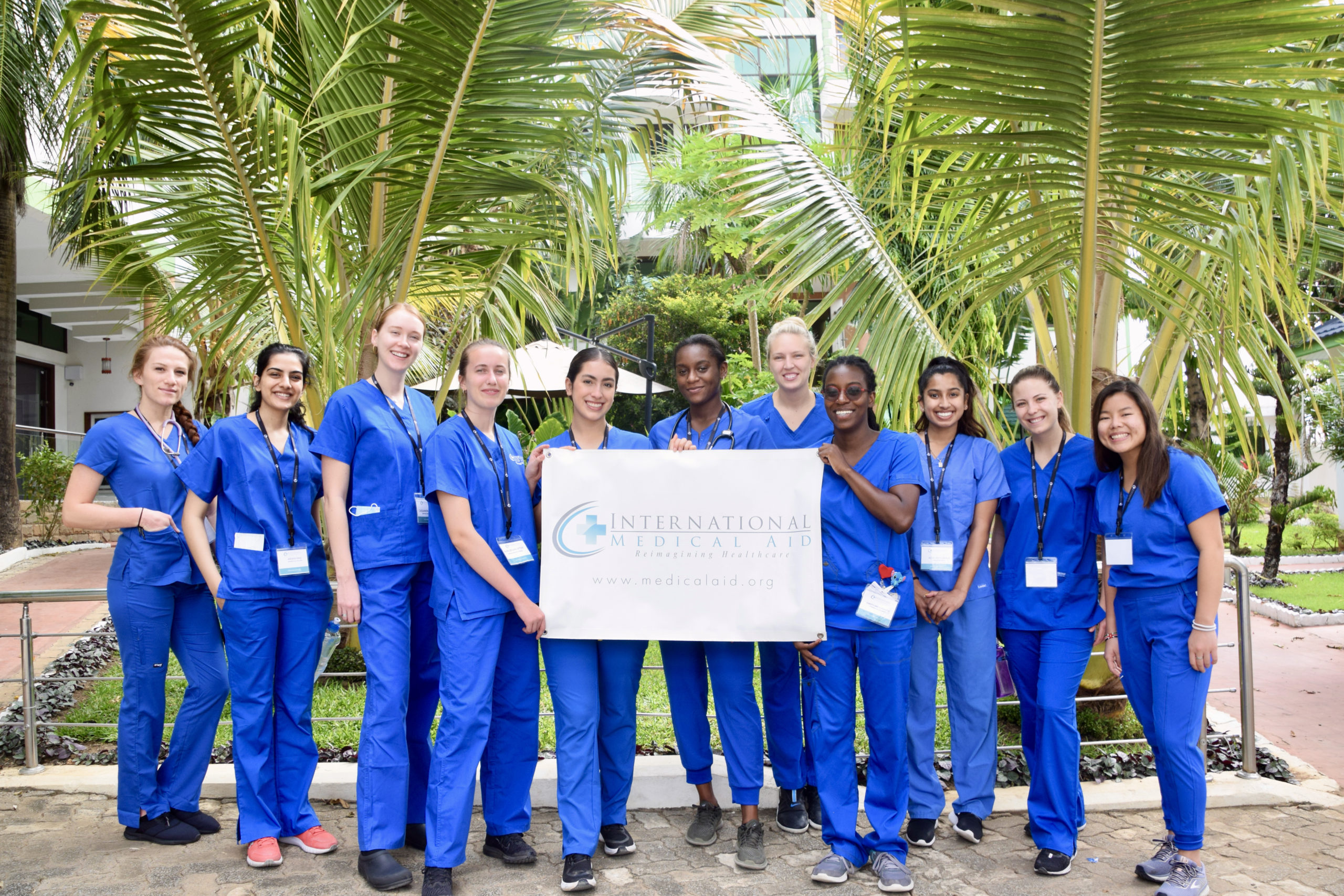MD/PhD vs. MD: Education
Both MDs and MD/PhDs are medical doctors, but MD/PhDs also hold a PhD and therefore are known as physician-scientists or medical scientists. If you want to obtain this additional title, you will need to take part in a program with a different structure and length than standard MD programs. MD/PhD programs are typically between seven to eight years in length and require one to attend both medical and graduate school. MD programs can be completed in four years (half the time of an MD/PhD program). During the first two years, both programs are classroom-based, but MD/PhD students will move on to grad school to complete their PhD thesis during years three and four. Afterward, they will return to medical school for one to two years to focus on completing clinical rotations. Both MD and MD/PhD students will take part in and spend around three to seven years in a residency program before obtaining their license to practice medicine.
MD/PhD vs. MD: Application and Tuition
The application for both programs is similar no matter which you decide to pursue. You will apply to the majority of these programs through the AMCAS, completing all sections of the application, including the AMCAS work and activities section, and uploading your coursework, letters of evaluation, and personal statement. Before submitting your application, it is important to check the requirements of each medical school, as some will require you to take the CASPer exam. If the program you want to apply to requires this exam, begin practicing for the exam by utilizing practice questions as soon as you can to best prepare yourself. In addition to the standard components of an MD program application, MD/PhD applicants will need to complete two additional essays. These essays will describe their reasons for pursuing an MD/PhD program and their previous research experience. Review each college’s application process and timeline to ensure you are aware of the process and any deadlines.
On average, the yearly medical school tuition for students enrolled in an MD program is around $37,000 in-state and $62,000 out-of-state or for those attending a private college. Students who are enrolled in MD/PhD programs often have the benefit of a largely reduced tuition or free tuition as some programs provide waivers and offer stipends to help students afford the cost of living expenses. Currently, forty-nine MD/PhD programs receive funding from the National Institute of General Medical Sciences (NIGMS) through the Medical Scientist Training Program (MSTP).
MD/PhD vs. MD: Competition
It’s no surprise that both MD/PhD and MD programs are highly competitive. The average acceptance rate of these programs is between 1-4%. Compared to MD programs, there are considerably fewer MD/PhD programs available. The added benefit of tuition waivers makes the competition for these programs even higher. With such high levels of competition, it is a good idea to see how your grades and test scores compare to the average scores of students accepted into the program. Last year, matriculants of MD/PhD programs had an MCAT score of 516 and an average GPA of 3.8. The average MCAT and GPA of MD program students was 511.5 and 3.73, respectively. From this data, we can determine that to be a competitive applicant get into an MD/PhD program, one will need to possess a higher GPA and MCAT score than what is typically required for an MD program. Of course, each college will also have varying levels of competition as some receive a higher volume of applications each year than others.
If you are considering applying for an MD/PhD program and have already taken the MCAT but did not receive a score of 516 or higher, you may want to consider retaking the MCAT. Retaking the MCAT is not right for all students, but it may help boost your test score and give you an edge when applying to competitive programs. For further personalized help, consider seeking the guidance of medical school admissions consulting.
MD/PhD vs. MD: Salary and Career Outlook
While it may be obvious that those who graduate from an MD program go on to practice medicine as medical doctors within a hospital or clinic environment, some individuals are unsure of what post-grad life would look like for a physician-scientist. The majority of MD/PhD graduates choose to complete their residency in pediatrics, internal medicine, pathology, or neurology. However, many specialties are represented, from emergency medicine to surgery and radiology. Among MD graduates, internal medicine, pediatrics, family medicine, and emergency medicine are the most common specialties. According to AAMC’s study, almost 80% of MD/PhD graduates hold positions at federal agencies, research institutes, medical schools, or the National Institute of Health. Of the 7,000 MD/PhD grads who took part in the study, 82% said they would take part in an MD/PhD program again.
Physician-scientist possess both in-depth knowledge of the medical field and knowledge of population health and disease. They are also trained to conduct thorough independent research and analysis. Physician-scientists with this dual degree are highly valued for their ability to treat patients, develop new treatments, and detect potential health threats. Those who choose to work in academia often teach and provide clinical services while also conducting their own research. The average annual MD/PhD salary is between $60k and $115k, depending on location and type of employment.
Physicians manage the health and well-being of patients in their care. This is done through physical exams, treatment, diagnostic testing, and communication. Depending on the type of physician, they may treat specific or general illnesses and diseases and perform surgical procedures. The annual salaries of physicians correspond to their level of training and specialization, but on average, a non MD/PhD salary for physicians ranges from $180k to $280k.
MD/PhD vs. MD: Which is a for You?
For some people, they knew what they wanted to be from the moment they first put on safety glasses in science class or gave their teddy bear an exam with a toy stethoscope. However, not everyone has the “aha” moment or an immediate passion for a field of work. Sometimes, one’s drive and passion for medicine and research develop later in their life. This passion may be formed by experiences, education, or overcoming hardships. What if you have a passion for both medicine and science? How does one choose whether to pursue a joint MD/PhD or an MD degree? You should only choose after you’ve taken the time to consider the variety of factors involved and are 100% confident in your decision. The reality is that neither choice will be easy, and both will require you to invest a lot of time, effort, and money.
Discover What Drives You
Begin by thinking about what you’re interested in and what motivates you—this will help you determine what your true passion is. If you discover that you are highly interested in medicine and want to help others, but you only have a small interest in the field of research, it may be best to pursue a career solely in medicine. With it being twice the length of an MD program, an MD/PhD program is no cakewalk. Students should only pursue this program if they have deep passions for both medicine and research. If you feel passionate about helping and treating patients and are interested in discovering more about the mechanisms behind diseases or can’t imagine a career that doesn’t involve some form of research, then the joint program may be right for you.
When deciding between these two career pathways, the first decision you will have to make is determining whether you are interested in becoming a physician-scientist or medical doctor. Those who are motivated by their passions are more likely to enjoy their career because they are doing something that they want to do. If you struggle to determine where your passions lie, consider participating in a pre-med shadowing study abroad program.
Let Your Experiences Guide You
What’s the best way to know which path is right for you? Gain experience in the field you are interested in before filling out your medical school applications. If you are struggling to choose between the two program options, be sure to gain experience in both fields before making your final decision. Getting hands-on experience in both fields is a great way to discover which career path truly sparks your interest. Some ways to gain this hands-on experience are by shadowing a doctor or participating in a healthcare internship. These experiences will be essential when it’s time to fill out your med school application, and through these unique experiences, you will discover your passion.
Consider Each Program’s Affordability
According to data from AAMC, approximately 76% of med school students graduate with some form of college-related debt. For students who take out student loans, the median debt is around $200k. Of course, physicians often earn a high salary, so this debt can be repaid after entering the workforce, but many students experience a rocky start as they begin their careers. One of the biggest benefits of an MD/PhD program is that most of these programs partially cover or waive tuition for students. Students may also receive a stipend to cover the cost of their living expenses. This allows some students to complete their training and graduate debt free. While you shouldn’t choose a program only based on the cost associated with the program, it is an important factor to consider. You should make a decision that best aligns with your passions, motivations, interests, and career goals.





